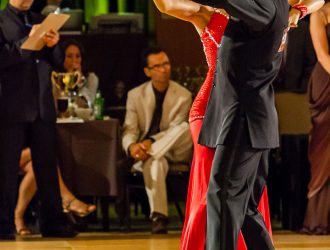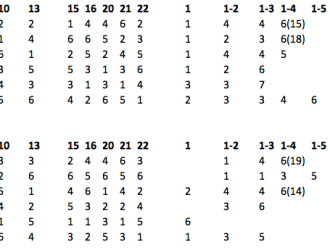Skating System
The Skating system is a method of compiling scores in ballroom dance competitions. It was introduced by the British Official Board of Ballroom Dancing (now British Dance Council) in 1937.
Overview#
The Skating system was first used during the Blackpool Dance Festival and has gradually been adopted in ballroom dance competition around the world as well as by other dance competitions, by the World Salsa Federation.
The skating system consists of 11 rules, 10 of which determine the scoring of the final round.
Preliminary rounds#
The first rule is for preliminary rounds (semifinals, quarter-finals, etc.). It says that for each dance of the round the judges must mark the number of dance couples specified by the Chairman of Adjudicators whom they decide to advance to the next round. A score of a couple is the number of all “pass” marks over all judges and dances. The couples with the highest score advance to the next round. Usually the number of the couples to enter the next round is known in advance. However in the cases of ties the Chairman decides the number of dancers for the next round
Final round#
Rules 2-4 specify how the dancers receive marks in the final round. The marks from each judge for each dance are the places for the dancers, with the 1st place being the highest. No ties are allowed, i.e., if 6 couples are in the final, all places 1-6 must be assigned.
The remaining rules are for the calculation of the final placement of the couples. They involve a formal tie-breaking process. Rules 5-8 are for tallying the final places for each dance separately, rules 9-11 compile the final overall placement of couples in a dance category.



